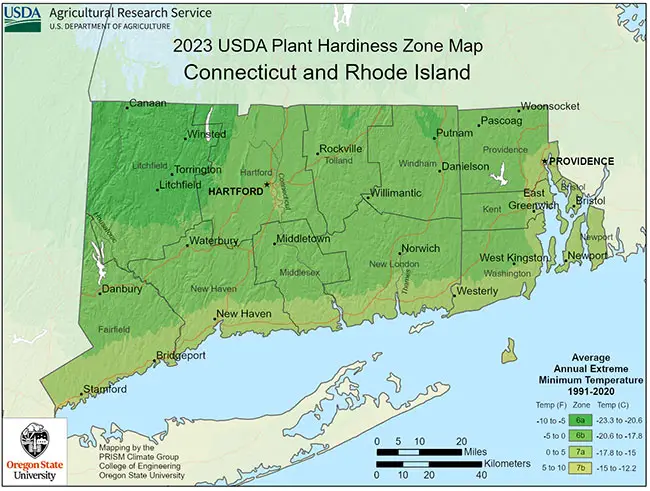
Rhode Island’s climate is not conducive to palm trees, as it experiences cold temperatures throughout the year. The state features a humid continental climate characterized by chilly winters and brief, rainy summers.
Summers are relatively warm, with average July temperatures around 73°F (23°C), while winters are cold, with an average January temperature of 28°F (–2°C). Rhode Island also contends with an annual snowfall averaging 37 inches (94 cm) and faces threats from blizzards, hurricanes, and storms.
The state’s temperature extremes include a highest recorded temperature of 104°F (40°C) and a lowest of –23°F (–31°C). Rhode Island’s USDA hardiness zones encompass a range from 5b to 7a.
Growing Palm Trees in Rhode Island
While there are a few areas in Rhode Island that fall within zone 7a, even cold-hardy palms may struggle to survive the winter there. It’s not just about the cold temperatures but also the duration of cold spells.
Many cold-hardy palm trees can withstand very low temperatures but only for a short period of time, making them ill-suited for Rhode Island’s prolonged winter conditions. Here are some palm trees that can grow in zone 7:
- Needle Palm Tree – Zones 5b-11 (-15 to -10F)
- European Fan Palm Tree – Zones 7b-11 (5 to 10 F)
- Pindo Palm Tree – Zones 7b-11 (5 to 10 F)
- Sago Palm Tree – Zones 7b-11 (5 to 10 F)
- Saw Palmetto Palm Tree – Zones 7a-11 (0 to 5 F)
- Windmill Palm Tree – Zones 7b-11 (5 to 10 F)
More Palm Trees»
Major Cities in Rhode Island
Cranston – Hardiness Zone 6b
Providence – Hardiness Zone 6b
Warwick – Hardiness Zone 6b
